Stories From the Azores
Corvo : Tetonia knew about flying in the Azores and she said that, based on the fierce wind that we were experiencing that morning, it wasn’t likely that we would be flying anytime soon. For the first years of her adult life she had worked for SATA, the airline of the Azores. She knew the airline that provided transportation over the 600 kilometres that stretched between the nine islands; that it flew through summer calms and, when necessary, as storms approached and that regularly its planes just couldn’t fly at all.
Tetonia had an additional insight into the risks of air travel between the islands because she and her husband Carlos had raised, along with their own two children, three orphaned nieces. The girls became orphans when the flight that their parents were on in December of 1999 got disoriented in wild and stormy weather and flew into the side of a mountain on an island close to their flight path1. All the children are now grown. Of interest, one of her nieces went to university in the Azores, studied dentistry on the mainland and finally graduated as an orthodontist. Her orthodontic practice is on Santa Maria, the main island of the Azores (population 140,000), but once a month she flies to Flores, the island she grew up on, to provide tooth straightening services to its 4000 inhabitants; and to visit with Tetonia and Carlos, her adoptive parents.
1From the internet: “On 11 December 1999, SATA Air Azores Flight 530 crashed on the island of Sao Jorge in the Azores. The British Aerospace ATP, en route from Ponte Delgada Airport to Horta Airport was on descent in heavy rain and turbulence. The combination of weather conditions, the pilots not using the onboard weather radar, imprecise navigation, and the plane not keeping above the minimum safe altitude, resulted in the place to crash into the north face of Pico da Esperanca. All 35 people on board were killed.”
It’s April 2016 and there are four of us: brother John, his wife Sharon, my wife Deborah and me. We’re in the middle of a two week expedition to the Azores, which involves 5 islands, four interisland flights and one ferry trip. We’re on the island of Flores and heading off to Corvo, the most remote of the Azores. Corvo is a tiny island (6km by 3km). 400 people live there. I have been thinking about getting to this island for about a quarter of a century.
Twenty-four years earlier I spent a week in the Azores with my daughter Maria. One of my patients, Peter, had moved to the Azores 7 years earlier and on one of his return visits to Canada, he extended an invitation to visit. I have been a fan of things Portuguese since I first ended up in Portugal as an 18 year-old with a backpack. Of the 20 countries that I visited over 6 months of travel, Portugal was, to me, the best place. I liked the people, the culture and the landscapes.
So, having been to the mainland several times, a trip to these Portuguese islands set in the middle of the Atlantic seemed like a compelling prospect. Daughter Maria (aged 11) and I visited two islands, Terceira and then, Peter’s island, Santa Maria, by far the largest and most populous of the 9 islands that form the archipelago. We had a great time. The Azores were first discovered in the early 1400’s and were settled thereafter. As a result they don’t have the layers of history and culture of mainland Portugal, but they are striking
windblown places surrounded by ocean. While in the Azores we got a book with photos and descriptions of all of the islands. The last island in the book, Corvo, has stayed with me ever since. Corvo is the smallest and most remote of all of the islands in the Azores. It is at the west end of the island chain, only 50km closer to Portugal than it is to Newfoundland. There it is, 3km by 6km; 400 souls clinging to the edge of a great volcano. How could this be? How is it to live there? For a quarter of a century this place has played with my imagination. And now we were so close, a very short flight away. Flights to Corvo come every two days and, based on our return date to Canada, if we missed today’s flight we wouldn’t be getting to Corvo at all.
Tetonia explained that it is the pilot who makes the final decision on whether to fly or not. She further explained that Flores has a runway that is sheltered by the bulk of the island, but on Corvo the landing strip is by the ocean, completely exposed to the prevailing wind which is then confounded by cross winds and eddies deflected by the volcano that forms the island. In a good blow, waves that have crossed the Atlantic wash over the far end of Corvo’s runway. And we seemed to be in the middle of a good blow.
We thanked Tetonia for her thoughts and concern, and against her better judgement we drove across the island and down to the airport. There we met Suzanna, the representative from the rental agency that had provided our car. A cheerful woman, she listened while we described Tetonia and her warnings. She knew Tetonia and confirmed that her story was all true. Then she added her own involvement in this event. In 1999 she was a student at the University of the Azores in Ponta Delgada, Santa Maria’s urban centre. She was scheduled to fly home for Christmas break but was informed on Friday that she, and all of her classmates, would have to re-write an examination on the following Monday; so she missed her flight on Saturday, December 11, 1999. This was the flight that, in stormy weather, flew into the mountainside on Sao Jorge. She reported that one other person missed that flight. He was very inebriated and was last seen loudly berating the airline desk attendant for leaving him behind. Suzanna is philosophical. Her family includes several pilots as well as airplane mechanics. She says that, for her, the rougher the flight the more she enjoys it. The plane2arrived on schedule.
2The inter-island planes are Bombardier Dash 8’s. Canadians: be proud!
After some time, the pilot did say that, yes it was blowing very hard, but he thought that is was worth a try, and if it was too dangerous he would return us to Flores. We, along with about 8 others, took off from the shelter of the island. Corvo isn’t far from Flores so we didn’t gain much altitude. This gave us an excellent look at the large wind-driven mid-Atlantic swells and their whitecaps. One of the things that you pass as you come down onto Corvo is a cemetery located beside the runway. I’ve seen enough movies to be alert to foreshadowing, and this got my attention. I’ve had rougher landings but I don’t remember when. The pilot, clearly a cowboy at heart, just brought that bucking plane down through the winds and crosswinds correcting the whole way. And then we were on the ground and the engines reversed and we came to a stop. The plane was still shaking. It was the wind buffeting the plane. We were on Corvo.
When you are on an island with 400 people you wouldn’t expect there to be a car rental agency and you would be correct. However, there will be a car waiting for you from the Guest House Comodoro where you have reserved rooms. It is the only accommodation on the island. The car will be driven by Manny (Manuel), former mayor of Corvo and the proprietor of the Comodoro. Or his daughter, Cathy, who now shares in operations at the Comodoro. Cathy has her own story. She grew up in America. Her parents, Manny and Rosa, had emigrated to the U.S. in 1973, the year after their marriage, and they lived in the New Bedford area near Boston. Then in 1987 they decided to move back to Corvo. Cathy was 14. She was bereft. She grew up in a world of U. S. richness: high school, a full social network, television and all the complexity that a middle-class urban North American young woman would expect as normal. And then she was moved, with her parents and against her will, to a community of 400 people: the only village on a small island in the middle of the Atlantic. There wasn’t even television. She hated it with all the passion that a 14 year-old is capable of. All she wanted to do was go to a
night club, with friends and this was not going to happen. I don’t imagine that she went out of her way to make her parents lives easier.
Cathy is now married to a man who has the largest herd of cattle on the island, 120 out of a total of 1200. Part of her condition to marriage was that he would build her a split-level house. He did. It is the only split level on Corvo. And when the lawn gets long a few cows are tethered on it until it is short again. (lawn moo-ers?)(You have to wonder if this will get past my editors.) Cathy now travels between the islands and to the Portuguese mainland, but although she still has friends in the Boston area she hasn’t been back in years.
Corvo is essentially a very large volcano with a flat area at one end. This is where the people live. The village feels very much like many villages in Portugal except that there are no roads connecting it to other villages. There are no other villages. Until the landing strip was
completed in the early 1990’s the only way to get here was by boat, from Flores. In mid-winter storms this wasn’t always wonderful. Farming and fishing are the two reasons for being there. Whaling used to be part of the mix but that ended decades ago.
Manny, the proprietor of the Comodoro, told us about his wife Rosa’s father. He was a whaler and he was killed while whaling in 1955 at the age of 29. That was the final year for whaling in Corvo and he was the last man from Corvo to die in a whaling accident. Rosa was 5 at the time and her then pregnant mother had to raise 5 children on her own. This was “not easy”.
Manny had many stories. Born and raised on Corvo, he talked about the grinding poverty that he grew up in. He said, “There was just no money.” He remembered as a child being entrusted with a single egg to take to the store to exchange for some other product. He joined the military in 1969, was sent to Angola to fight against nationalist guerrillas and was demobilized in 1972. He married Rosa, and a year later they emigrated to the U.S. He ended up in construction where he discovered American “know how” and entrepreneurialism. In 1987, 40 years old, he and his family returned to Corvo. One of his first jobs was to look after paving the road to the top of the volcano. By 1994 he was mayor of Corvo. One of the projects that he pushed through was to create a reservoir on the mountainside. The island had traditionally run out of water during the drier summer months. There was considerable opposition to this project. “We’ve never needed
this before, why do we need this?” Now the town has water year round and they are working on the construction of a second reservoir. He also oversaw the creation of a new public school, a senior’s residence and a medical clinic. All this in a community of 400. Much of this became possible when Portugal joined the European Union (EU) and EU funds became available.
Manny is now retired from politics, but he is still a force to be reckoned with. We met the current mayor, Jose. He is married to a teacher who came from the mainland and they have a 7 year-old daughter. When you are in a community of 400, it’s easier to get to know the power structure. When we told Manny about this meeting he said that he had supported Jose and worked hard to help him get elected.
Even with an airstrip, Corvo is wonderfully isolated. Manny reported that the Comodoro has four guests, an Italian couple with two children, that come to Corvo every summer for a couple of weeks. They feel completely comfortable dropping their kids, now 8 & 10, off at the sheltered beach, letting then hang out there for the day and then come home on their own. The whole village knows who the children are and look out for them: something from another time.
An old mill has been turned into a museum (more EU money). An ox harnessed to a wooden beam walked in a circle, which turned the grinding wheel. Above the grinding wheel was a box about 12 inches by 12 inches and 4 inches deep. This box filled with grain or wheat was what a man was traditionally paid for a full day’s work. “There was no money!”
By the time that we were scheduled to leave Corvo the wind had subsided. Manny dropped us off at the airport. We checked our luggage and got our boarding passes. It was 12:10 pm. Our boarding pass showed that boarding would start at 1:25 for a 1:45 departure. There was lots of time to get to the nice little restaurant 5 minutes down the road and have a civilized lunch. We ordered our meal and a bottle of Azorean wine. We were sitting back and enjoying the remarkably fresh fish when, at 1:05, the restaurant’s owner (and chef) came over, cell phone in hand. It was the airport. They knew where we had headed and were calling to inform us that everybody else was at the airport and that they would like to depart early. Could we get back to the airport? A last mouthful of food from half finished plates, a swallow of wine and we were off. Ten minutes later we were up in the air heading to Faial.
A final note about Corvo: Birders are a passionate bunch, often spending significant sums on cameras, binoculars and travel. Accidentals, birds found well out of their normal habitats, are one of the holy grails of birding: finding one gives birders great bragging rights. Peter Alfrey, a British birder, set off for Corvo in October of 2005 hoping “perhaps to see a North American landbird or two”. After a week of finding nothing, he wanted to depart Corvo: this hadn’t been a good idea after all. However, departure was not going to happen any time soon. There was a massive storm coming in across the Atlantic and the threat of it shut down all air travel. Do you remember Hurricane Katrina? He does. He was greatly frustrated because he really wanted to get back home. And he couldn’t. The storm swept over the island in spectacular fashion. Before planes were back in the air, having nothing else to do, he did what all good birders do and went
birding again. He found a changed world. He was in a birding goldmine of epic proportions: accidentals everywhere! He sighted 52 individuals of 17 species of North American land birds.These birds were picked up by the storm, and were blown across the Atlantic staying aloft until they finally found Corvo, somewhere to land!
The following spring Alfrey published his findings in Birdwatch, a British birding journal. Since then, for the month of October (the height of the Atlantic storm season) there are no vacancies on Corvo. Every room is booked a year in advance by bird watchers seeking accidentals. Manny and Cathy, proprietors of the Comodoro think that this is amazing: fully booked in what was the off-season, for an entire month! Birders are a wonderful and passionate bunch.
Flores: We visited five of the nine islands of the Azores. I would happily revisit any of them, and for longer, however Corvo and Flores, for me, are at the top of the list.
Flores is the Portuguese word for flowers. During the summer the island is covered with pink and blue hydrangeas, which gave rise to the island’s name. It is about 8 times the area of Corvo with about 4000 inhabitants.
Until the 1970’s Flores had no central power station, no hospital and no airport. Linda runs the grocery story and a bar in Faja Grande3. Her parents were from Flores but she was born in California. When her younger brother turned 18 and wanted to strike out on his own, her parents returned to their ancestral home. She went with them. She hasn’t been back to North America since. She described how hard times were in Flores during her parents’ formative years: “There was no money. Goods were bartered, a chicken for some fish and so on.” This was a recurring theme.
3Faja Grande with a population of about 250 is the 4th largest community on Flores. Once a significant port, it is now primarily a holiday town based on tourism with swimming and surfing
Like all of the Azores, Flores is the result of volcanic activity with soaring hills and steep cliffs. The roads, which had once been described as the worst in the Azores, were rebuilt in the last decade and are now wonderfully smooth, winding up and down through magnificent vistas, volcanic peaks and ocean. There is virtually no traffic. It’s like your own personal motor park. I could return just for the driving, but there is more.
Cuada is a village located on a bluff 400 feet above the ocean. It was founded in the late 1600s. Around 1850 Cuada had 122 inhabitants living in 20 modest houses spread out over 10 or so acres. Of the 61 men living there not one wore shoes. Only two of the houses had proper roofs. Agriculture and weaving were the chief sources of livelihood.
By the mid 1960s the village was abandoned with most of its residents emigrating to America, the Promised Land. The village remained uninhabited and uncared for. Roofs fell in and walls collapsed. The fields were rapidly overgrown with trees and bushes growing in a lush
environment. Overlooking the ocean Cuada was becoming a romantic and forgotten memory. In the late 1990s this began to change. Tetonia Silva (the SATA employee with the ominous warnings at the beginning of this article) and her husband Carlos took on an enormous challenge: the rebuilding of Cuada. They looked at the property and its magnificent location and thought, in a moment of manic optimism that: “We can do this!” Among the challenges was tracking down the owners of the abandoned houses and buying up the deeds, convincing banks that this made any sort of sense and finally the brute physical labour clearing the overgrown fields and of rebuilding the stone houses: Tetonia and Carlos did it all themselves.
They started with one house and spent a year restoring it. Then they moved in and began the second restoration. When it was completed, they moved into the second house, rented the first one during summer months and started work on the third. After about 20 years the village is restored and during the summer they are fully booked and it all makes sense. But this was an enormous project! And now there is a beautifully restored village, surrounded by mountains and nature looking out over the Atlantic Ocean. The houses, with fully functional kitchens, are beautifully restored and comfortably furnished. The original stone paths connect the houses. There are excellent and inexpensive restaurants in nearby villages. I look forward to spending time here with kids and grandkids: a place that is beautiful, safe and wild. We would be there as a variation on Disneyland, except that this is all real.
The Azores: an overview: The Azores exist as the result of enormous volcanic activity at the junction of three of the world’s great tectonic plates. There is evidence of this history everywhere; steep volcanic peaks, walls built out of chunks of lava spewed out during eruptions
and along the ocean, where waves keep them uncovered, there are frozen lava flows from another time. Volcanic eruptions, both on land and underwater seem to occur several times a century. The Island of Faial had a major eruption in 1956 resulting in significant emigration
to North America. Aside from a trace of smoke from the top of Pico, the tallest volcano in the Azores, currently all is quiet.
The islands are surrounded by the northward flow of the warm waters of the Gulf Stream. As a result, the February day/night average is 16/11C and the August average is 25/19C. There has never been a frost recorded at sea level since records were first kept.
We visited five islands: San Miguel, Flores, Corvo, Faial and Pico. Flights to the Azores and then between the islands are with SATA (now renamed Air Azores). The trans-Atlantic planes aren’t great (crowded with no movies and bad food) but the flight is short (5½ hours: about the same as Vancouver) and costs are around half of a flight to mainland Europe. Flights between the islands are very reasonable as well: they averaged less than the cost of a couple of cases of beer.
The people are friendly and English will get you by almost everywhere. If/when we return we’ll spend a day or two on San Miguel, the main island, but then will be off to experience the unique and distinctive characters of the smaller of the islands in this long chain.
PS: this link takes you to a website that takes you for a five-minute helicopter flight over the village of Cuada and the island of Flores: aldeiadacuada.com. It starts up after about 5 seconds on the second panel of the site.
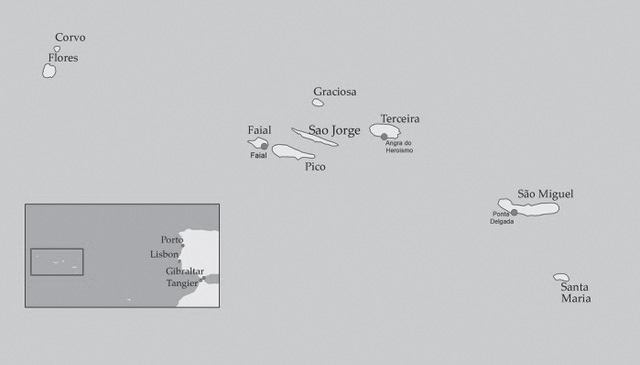
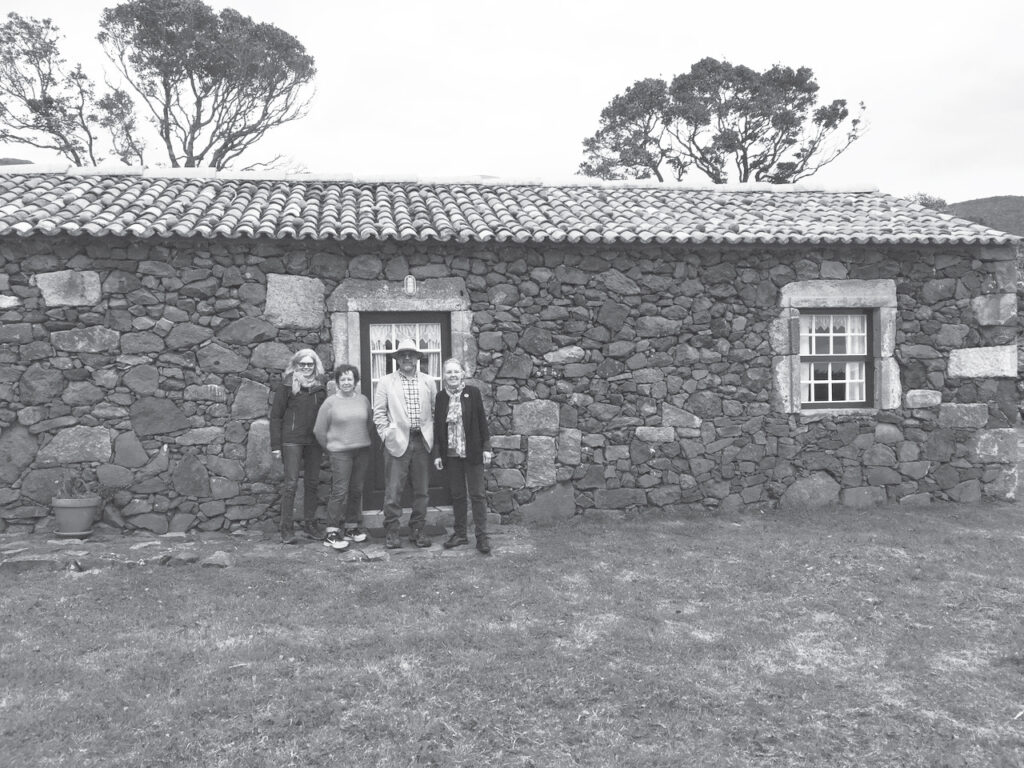

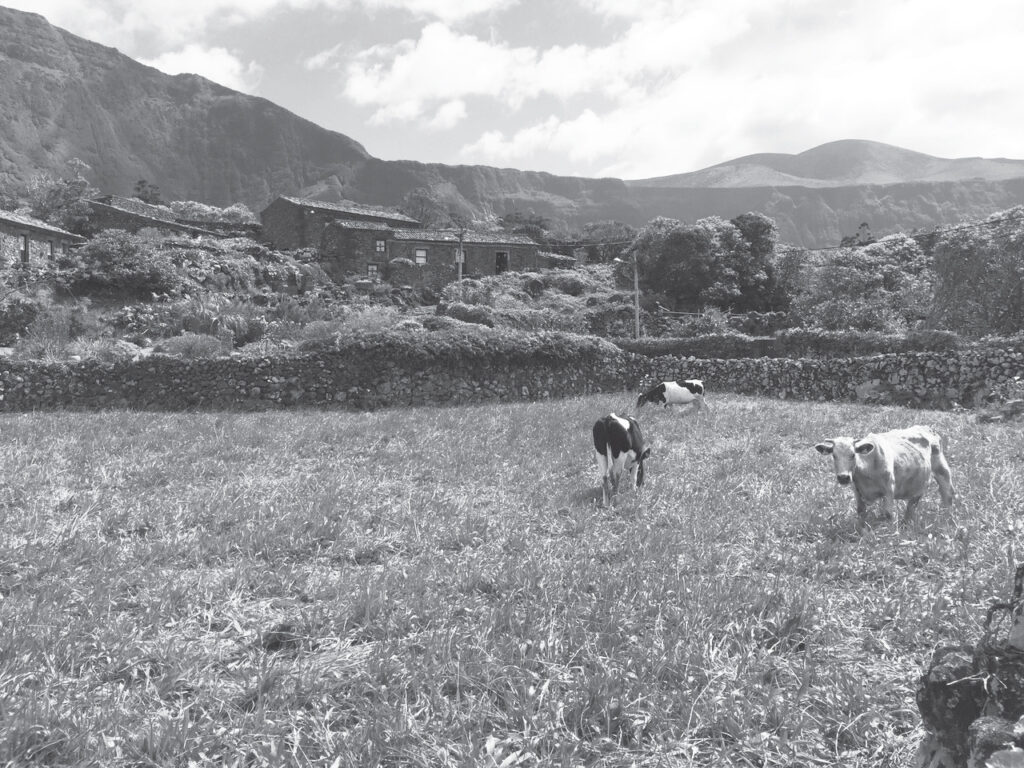

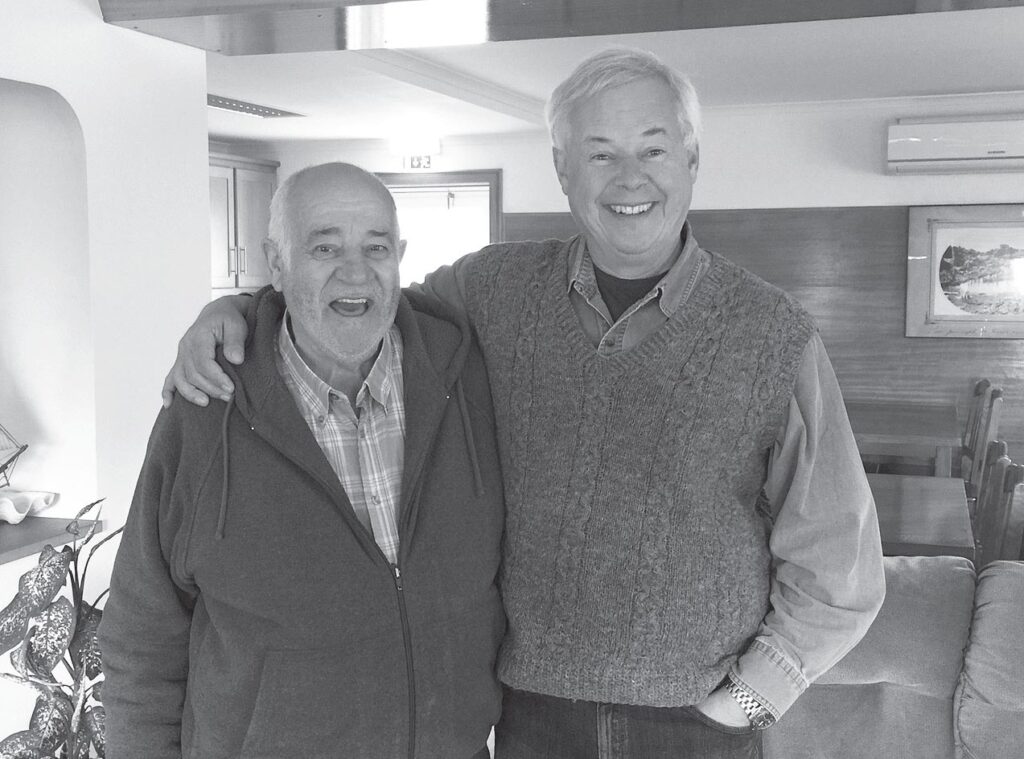
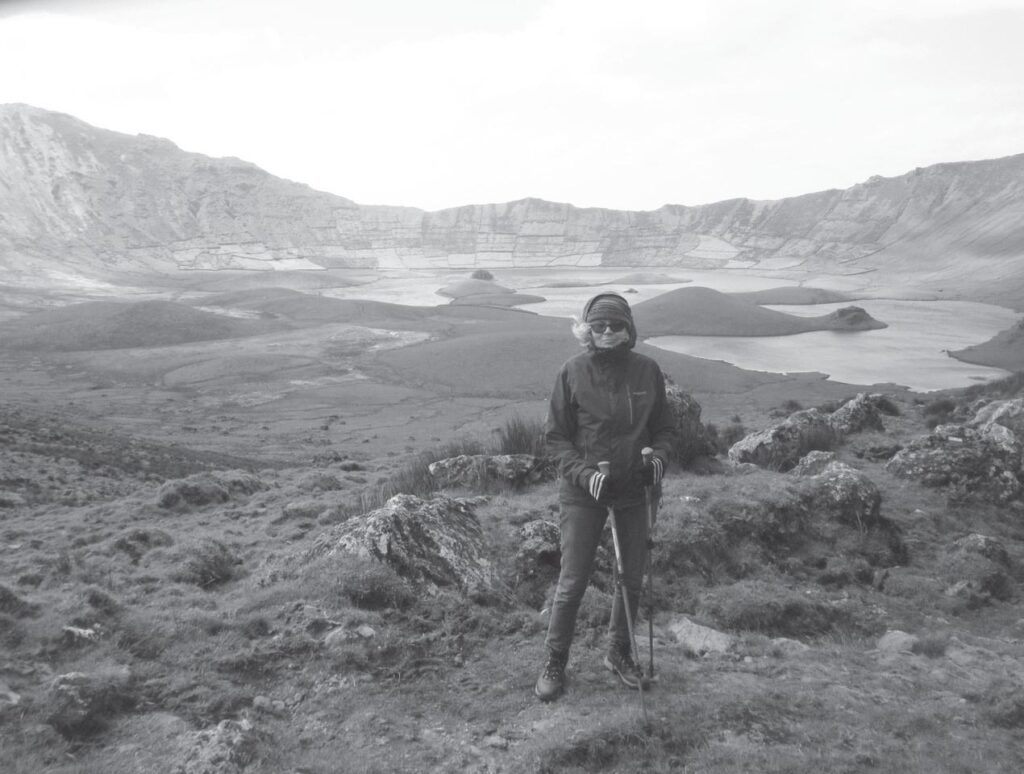
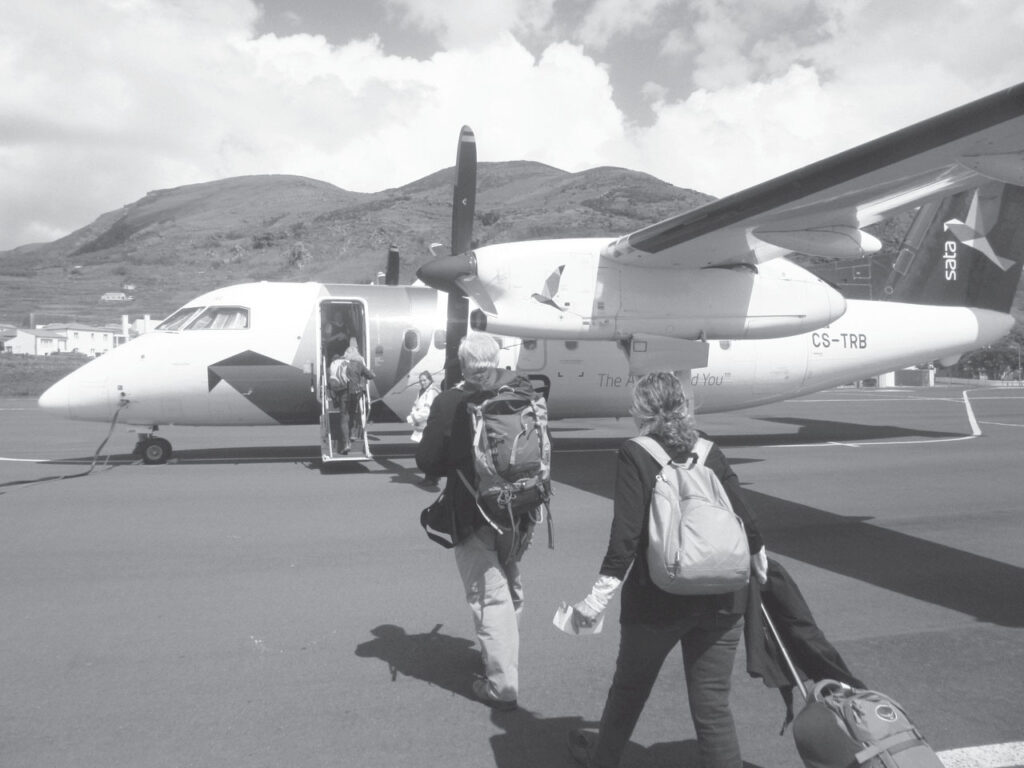
The Rest of the Newsletter
Dental Emergencies
If you have a dental emergency: a broken tooth, dental pain or the like, call our office. If we aren’t open and the problem can wait until we are, leave us a message. If things are more serious than that, call me at home (905-934-8598) and if I’m home, I am happy see you (one of the good parts of working at home – it’s easy). If I’m not home, we belong to an emergency service: a group of dentists that cooperate to provide emergency coverage for each other during evenings and weekends. Call the office back, stay on the line and you will get the details of how to reach our emergency after hours service.
Toothbrushes
Our advice on toothbrushes: use a soft brush! After years of advising and talking we still have people who like to use a stiff brush. You can, but you won’t clean away plaque (the soft layer of bacteria on your teeth) as well as with a soft brush. Additionally, a stiff brush can, combined with toothpaste wear grooves into teeth (tooth brush abrasion). We fix this sort of thing regularly.
And, finally, a stiff brush used with enough enthusiasm can actually push the gums down the tooth. You’ve heard of getting long in the tooth? This is one way to achieve this. Use a soft brush! Electric toothbrushes also work well. In our office we have each decided that, although we have an electric brush, we feel that we are doing a more thorough job of removing plaque with a regular soft brush. If you are using an electric brush, be sure that you clean thoroughly where the tooth meets gum tissue. This is the most important area and we tend to find that the electric brush hasn’t reached this area and plaque, which leads to decay and gum disease, is still there.
Referrals to Specialists
Specialists are dentists who have gone through extensive training after graduating as a dentist to develop a high level of expertise in one particular area of dentistry. Their practice is limited to this area and they do not perform the broad range of procedures that a general dentist does. If we refer you to a specialist, we remain your home dental office. If you have a complex problem, often a specialist is better equipped to handle the situation than we are. In this case, after discussion, you will be referred. We, however, will remain your home dental office. Sometimes this hasn’t been fully understood and patients thought that we were parting company with them: hence this note.
Some of the specialists that we use:
Oral surgeons: they look after complex surgery: extractions etc.
Orthodontists: straighten teeth and realign.
Paedodontists: provide care for young patients if complexity or anxiety are an issue.
Periodontists: help in keeping your gums in good health for a lifetime.
Endodontists: if you need a root canal and the situation is complex, they will take over.
We occasionally refer to other general dentists who, although not certified specialists, have developed a high level of understanding in a particular area of dentistry. Again, we expect to remain the home office.
Chemotherapy
When I was young cancer was generally considered a death sentence. Since that time cancer treatments and outcomes have improved enormously. We all know many people who are living with controlled cancer and are enjoying good and productive lives. One of the major tools for inhibiting the spread of cancer is chemotherapy. The medications used in chemotherapy kill the rapidly dividing cells in a cancer but leave normal slowly dividing cells alone. There are side effects. Our bodies have normal rapidly dividing cells and these are affected by the chemotherapy that is targeting cancer cells. Hair loss is one frequent result of this treatment. Another is that salivary glands, which have rapid cell turnover, are shut down for the duration of the treatment. As a result saliva production slows and dry mouth results. Salivary flow dilutes the acid that causes tooth decay and when salivary flow stops, tooth decay can increase, sometimes alarmingly.
What we, as a dental office, can do prior to the start of chemotherapy is review oral hygiene and work to keep teeth as free from plaque as possible. A second powerful tool that we have to limit decay is fluoride varnish. We use this on children when they are most prone to decay and it is also very useful to overcome the effects of dry mouth. The way this works is that a varnish containing a high level of fluoride is painted over the teeth. The fluoride is released slowly and gives the teeth a very thorough fluoride treatment. Studies show that this is significantly more effective than the fluoride gels that we used to use.
With children an annual or semi-annual treatment is sufficient. If you have chemotherapy we may want to consider a fluoride varnish treatment every 3 months, or even monthly if warranted. If you or a family member will be undergoing chemotherapy, speak with us
and we will work out a programme designed for your situation.
In Conclusion
As always, we here at Lakeside Dental, the room with a view, wish all of you the very best.
